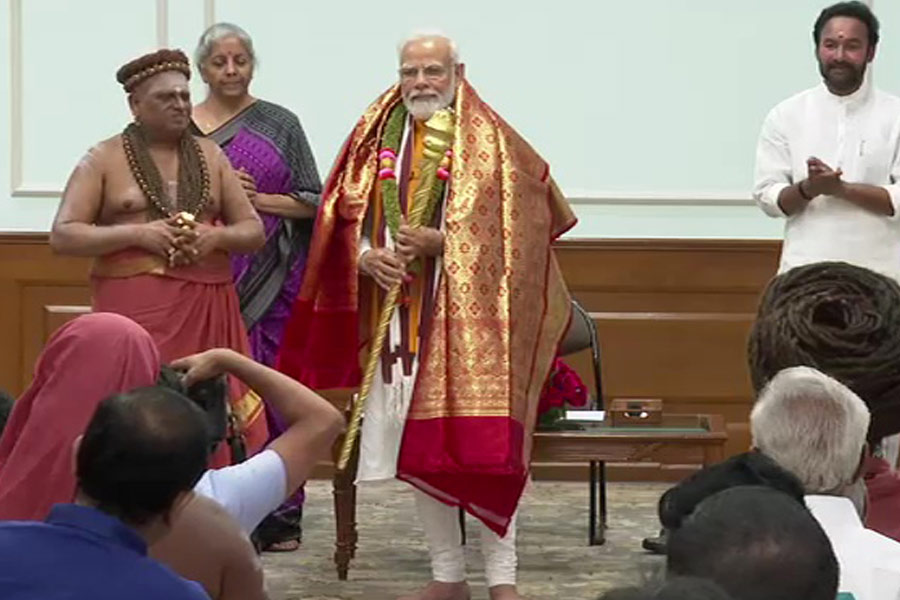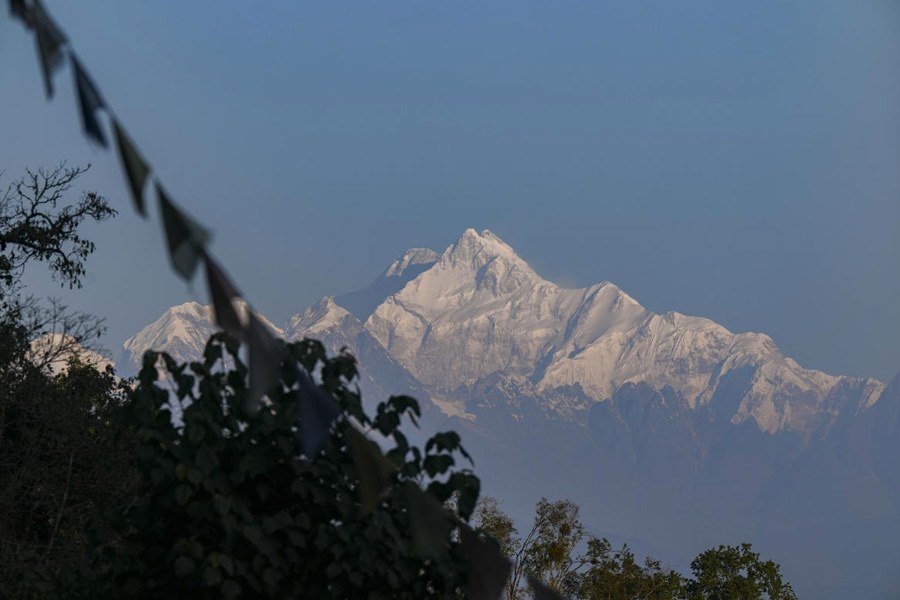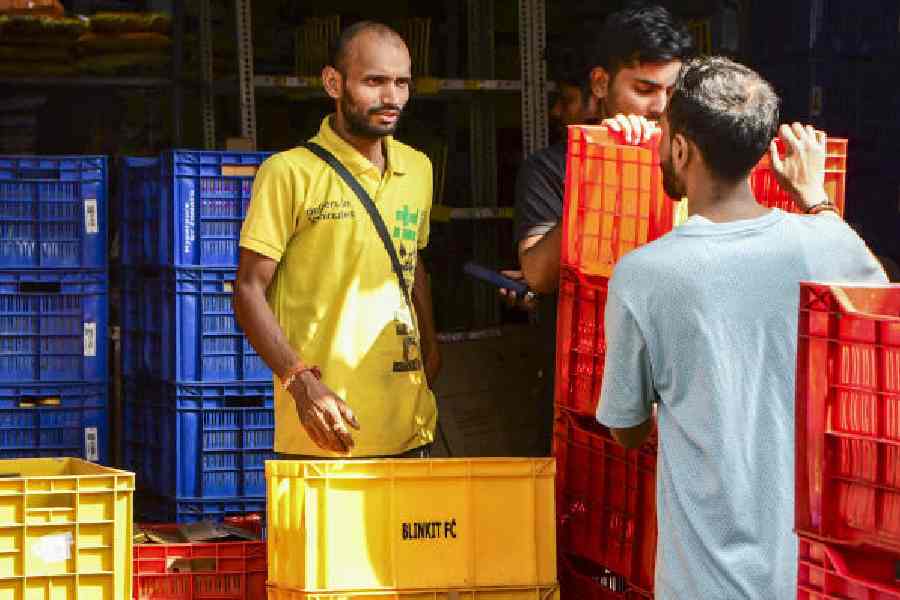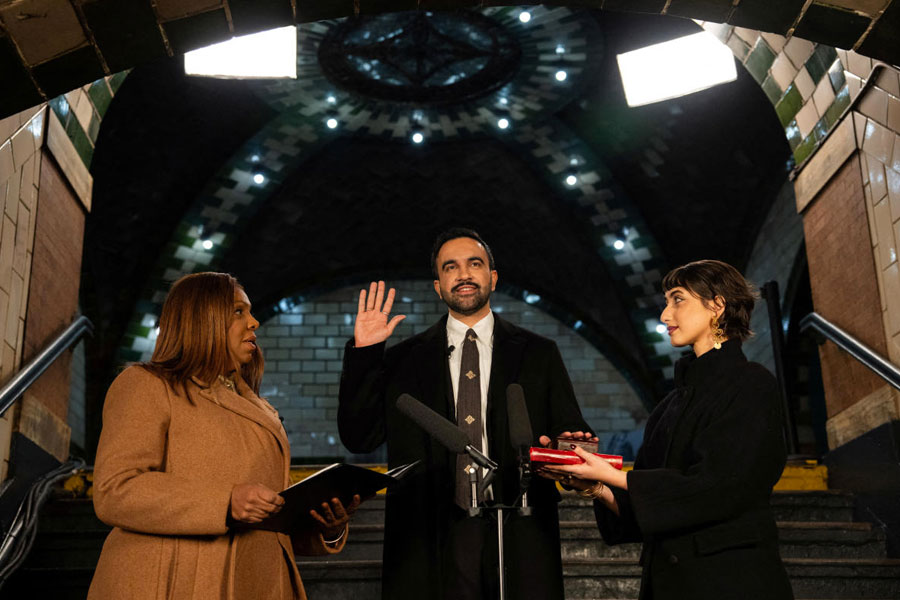They sprinkled Jawaharlal Nehru with holy water, smeared his forehead with sacred ash, laid their sceptre on his arms and draped him in the Cloth of god. To the man who had never ceased to proclaim the horror the word “religion” inspired to him, their rite was a tiresome manifestation of all he deplored in the nation. Yet he submitted to it with almost cheerful humility. It was as if that proud rationalist had instinctively understood that in the awesome tasks awaiting him no possible source of aid, not even the occult he scornfully dismissed, was to be totally ignored — Dominique Lapierre and Larry Collins in Freedom at Midnight.
Those sceptical of the Narendra Modi government’s claim that the 1947 transfer of power was marked by the handover of a “Sengol” — a Chola-style sceptre anointed by Hindu religious leaders — have found further ammunition in Lapierre and Collins’s book.
If the presentation of the sceptre to Jawaharlal Nehru symbolised a transfer of power from the British, the ceremony would have taken place at Parliament House or the Viceroy’s residence (now Rashtrapati Bhavan), literary and social critic N.E. Sudheer argued on Saturday.
“If it had any national significance like a change of guard or transfer of power, it wouldn’t have taken place at Nehru’s house (17 York Road),” he told The Telegraph.
“And that was the reason the Sengol went to the Nehru Museum (in Allahabad).”
The BJP, which has cited the sceptre’s being stashed away at the museum to accuse the Congress of indifference to Indian traditions, plans to install it in the new Parliament building.
“Had it (the sceptre) been of any national importance, there would have been some kind of continuity about the event, which Lapierre and Collins would have certainly kept track of,” Sudheer said.
“If they (the authors) could find out such minute details of the developments preceding Indian independence, they would have certainly found out and written about what happened to the Sengol.”
The theory of the Sengol symbolising the transfer of power has been contested by many including the Congress, academic Rajmohan Gandhi, and historian Aditya Mukherjee who is an authority on the freedom struggle.
Mukherjee on Friday said he had been unable to find any historical evidence of the Sengol being anything more than a gift from a religious institution to Nehru. He said the brouhaha over the sceptre, complete with its Chola legend and religious anointment, was “an effort to Hinduise the whole phenomenon as if a Hindu Rashtra was established in 1947”.
Sudheer couldn’t recall ever hearing or reading anything that corroborated the recent claims that India’s last Viceroy, Lord Mountbatten, asked Nehru to suggest a procedure to mark the transfer of power, and that the Congress leader sought the help of C. Rajagopalachari, who allegedly got the Thiruvaduthurai Adheenam — a Shaivite Math in Tamil Nadu — to have the gold-plated sceptre made.
In an opinion piece for ndtv.com that was published on Friday, Rajmohan Gandhi, who happens to be Rajagopalachari’s grandson and biographer, said he had “never heard of Rajaji’s purported role in the Sengol story”.
“Since the 1947 story is new to many, and not just to me, I hope that documents that confirm the roles in the story ascribed to Mountbatten, Nehru and Rajaji are made public as soon as possible. It would be good for the government’s credibility,” Gandhi wrote.
Sudheer said the sceptre handover, which occupies just five paragraphs in the nearly 600-page book by Lapierre and Collins, would perhaps have remained unknown to most people had the Sengol not been dusted off and taken from the Allahabad museum to Delhi for installation in the new Parliament.
“This episode is not even in the memory of most of those who have read this book since it was not an important event. I happened to remember it since I read it again recently,” Sudheer said.
“They (the BJP) are dusting off events that were unimportant… by spinning favourable stories out of them with loads of their own imagination.”
Sudheer added that Nehru, a rationalist and an advocate of the scientific temper, would not have been part of such a religious event had it not been for the communally tense atmosphere at the time of Independence.
“We must remember that it happened in a communally tense India. Naturally, Nehru wouldn’t have done anything to worsen the already tense atmosphere,” he said.
“Refusing to be part of such an event would have been counterproductive for harmony, so he accepted the Sengol, holy ashes and the (accompanying) rituals.”
Lapierre and Collins have described how the procession carrying the sceptre moved through “New Delhi’s crowded streets” at sundown on August 14, 1947.
The procession was led by a nagaswaram — a south Indian woodwind musical instrument played on auspicious occasions such as religious events and weddings — with two sanyasis riding a car behind.
“Their procession moved through the streets of the capital until it came to a stop in front of a simple bungalow at 17 York Road. On its doorsteps, those delegates had a rendezvous with the prophet of a new India of science and socialism,” the authors write.
Sudheer read a Sangh parivar agenda in the resurrection of the Sengol. “The saddest thing is that such a minor event was resurrected to help their brand of politics,” he said.
He added regretfully that he didn’t believe that the sceptre could be removed from the new Parliament building even if the Congress came to power in 2024.
“Let’s say the Congress comes to power in 2024. But they won’t be able to remove it, not because of their lack of disagreement, but because such an act would trigger a more dangerous situation,” he said.












